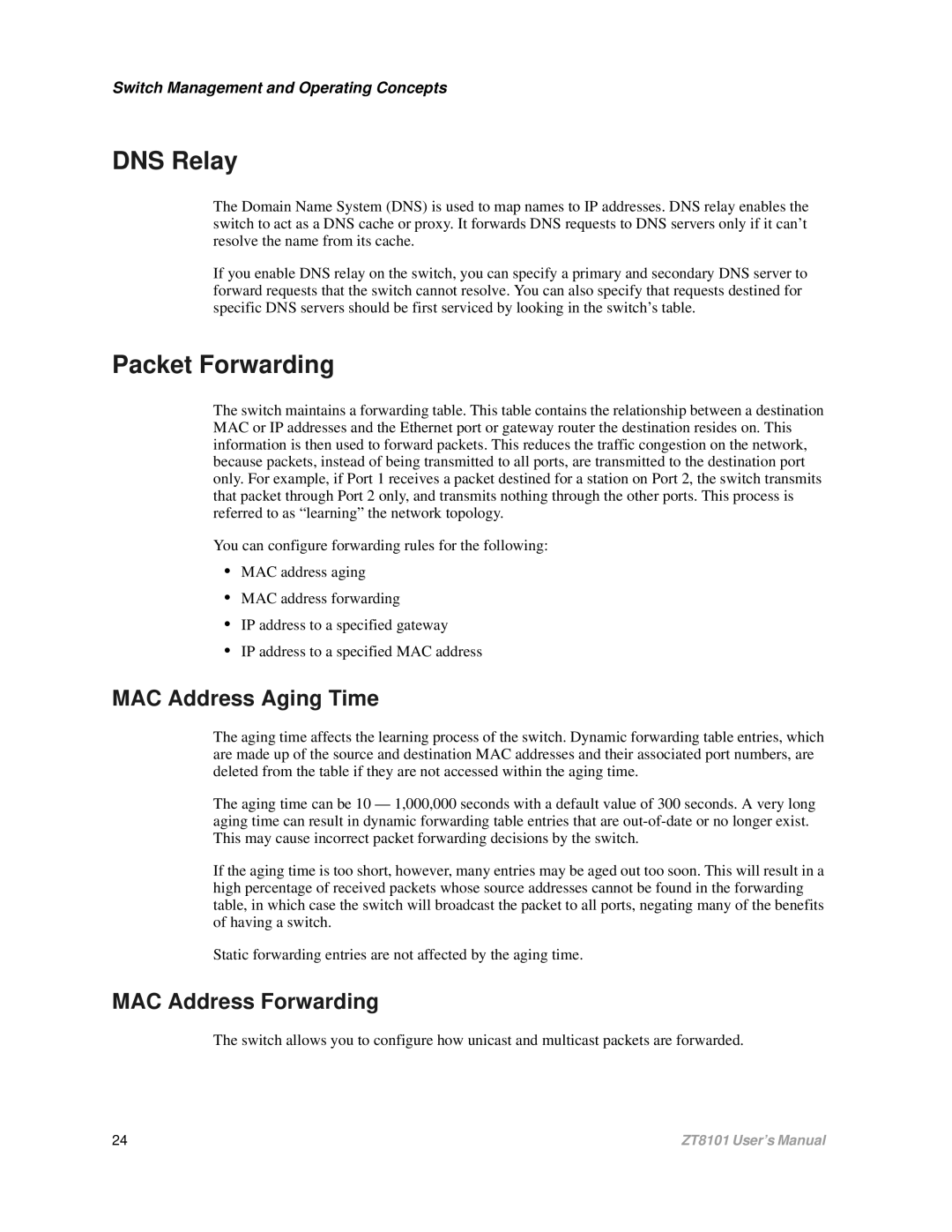Switch Management and Operating Concepts
DNS Relay
The Domain Name System (DNS) is used to map names to IP addresses. DNS relay enables the switch to act as a DNS cache or proxy. It forwards DNS requests to DNS servers only if it can’t resolve the name from its cache.
If you enable DNS relay on the switch, you can specify a primary and secondary DNS server to forward requests that the switch cannot resolve. You can also specify that requests destined for specific DNS servers should be first serviced by looking in the switch’s table.
Packet Forwarding
The switch maintains a forwarding table. This table contains the relationship between a destination MAC or IP addresses and the Ethernet port or gateway router the destination resides on. This information is then used to forward packets. This reduces the traffic congestion on the network, because packets, instead of being transmitted to all ports, are transmitted to the destination port only. For example, if Port 1 receives a packet destined for a station on Port 2, the switch transmits that packet through Port 2 only, and transmits nothing through the other ports. This process is referred to as “learning” the network topology.
You can configure forwarding rules for the following:
•MAC address aging
•MAC address forwarding
•IP address to a specified gateway
•IP address to a specified MAC address
MAC Address Aging Time
The aging time affects the learning process of the switch. Dynamic forwarding table entries, which are made up of the source and destination MAC addresses and their associated port numbers, are deleted from the table if they are not accessed within the aging time.
The aging time can be 10 — 1,000,000 seconds with a default value of 300 seconds. A very long aging time can result in dynamic forwarding table entries that are
If the aging time is too short, however, many entries may be aged out too soon. This will result in a high percentage of received packets whose source addresses cannot be found in the forwarding table, in which case the switch will broadcast the packet to all ports, negating many of the benefits of having a switch.
Static forwarding entries are not affected by the aging time.
MAC Address Forwarding
The switch allows you to configure how unicast and multicast packets are forwarded.
24 | ZT8101 User’s Manual |
